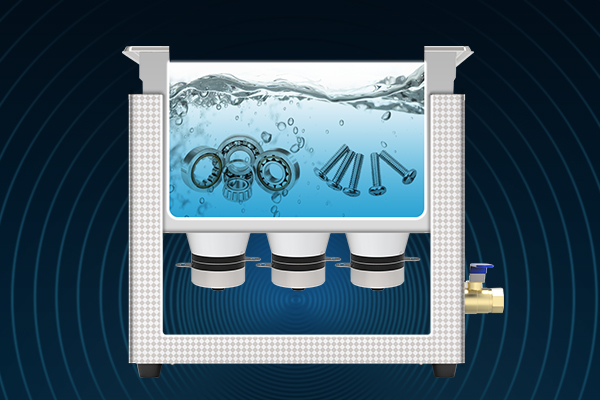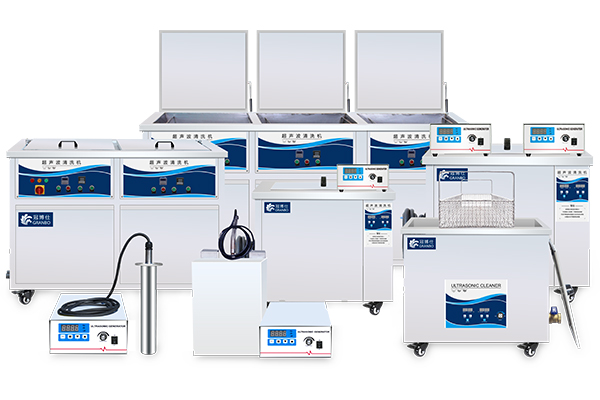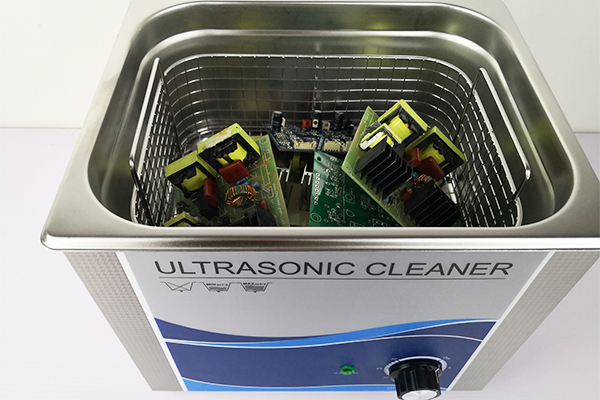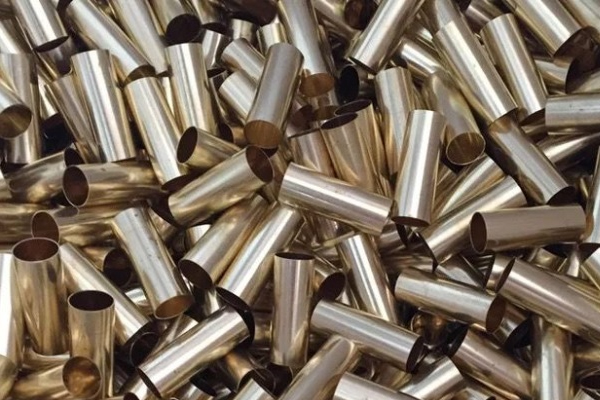Electroplated parts are often contaminated with various oils, dust, and other pollutants during the production process. If these pollutants are not thoroughly removed, they can affect the quality of electroplating and the performance of the parts. As an efficient cleaning equipment, ultrasonic cleaning machines have been widely used in the cleaning of electroplated parts.
The working principle of ultrasonic cleaning machine
Ultrasonic cleaning machines convert high-frequency electrical energy into high-frequency mechanical vibrations through ultrasonic transducers, which propagate through the cleaning solution and form dense tiny bubbles. These bubbles continuously grow and contract under the influence of pressure changes, and ultimately undergo violent explosions, producing a strong impact force. This phenomenon is called the “cavitation effect”. The cavitation effect is the core principle of ultrasonic cleaning, which can effectively remove dirt and oil adhering to the surface of parts.
Advantages of using ultrasonic cleaning machines
Fast cleaning speed:
Compared to traditional cleaning methods, ultrasonic cleaning has a faster cleaning speed. A large number of parts can be cleaned simultaneously, greatly improving production efficiency. Usually, it only takes a few minutes to tens of minutes to complete an efficient cleaning
Mild cleaning method:
Ultrasonic cleaning belongs to the physical cleaning method and does not rely on strong acids, strong bases, and other chemical reagents, so it will not cause corrosion or damage to the surface of the parts. Especially for some precision parts and valuable materials, ultrasonic cleaning provides a safe and non-destructive cleaning method.
Protecting part structure:
Traditional mechanical cleaning methods are prone to causing wear on the surface of parts, while ultrasonic cleaning is carried out through the vibration and cavitation effects of liquids, without causing any damage to the surface and internal structure of parts, thereby extending their service life.
Deep hole and blind hole cleaning:
Ultrasonic cleaning can penetrate into every corner of the parts, including deep holes, blind holes, and complex internal structures. Traditional cleaning methods are difficult to clean these areas, while ultrasonic cleaning can bring the cleaning solution to these difficult to reach areas through the vibration of the liquid, achieving comprehensive and thorough cleaning.
The specific process of ultrasonic cleaning of oil stains
The formation of cavitation effect
When ultrasound propagates in the cleaning solution, tiny bubbles in the liquid will periodically grow and burst. The collapse of these bubbles generates small shock waves with local high temperature and high pressure, which can effectively destroy the physical structure of oil pollution molecules and detach them from the surface of the parts.
Selection of cleaning solution
To improve cleaning efficiency, water-based cleaning solutions or solutions containing appropriate surfactants are usually used. Surfactants can reduce the surface tension of liquids, enhance cavitation effects, and help suspend oil stains in cleaning solutions.
Transmission of mechanical vibration
The transducer in the ultrasonic cleaning machine converts electrical energy into mechanical vibration, which is transmitted to the surface of the parts through the cleaning solution. Under the dual effects of mechanical vibration and cavitation, oil pollution is effectively dispersed and dissolved.
Stripping and Suspension of Oil Pollution
The impact force generated by the cavitation effect peels oil stains off the surface of the parts and suspends them in the cleaning solution. Suspended oil particles are carried away from the surface of the parts through liquid flow to prevent them from reattaching.
Rinsing and drying
After cleaning, the parts need to be rinsed to remove residual cleaning fluid and oil stains. Finally, the parts are thoroughly dried by natural air drying or using equipment such as a hot air dryer to prevent residual moisture from affecting the subsequent electroplating process.
Key parameters during the cleaning process
Ultrasonic frequency
Ultrasonic frequency is an important parameter that affects the cleaning effect. Generally speaking, low-frequency (20-40kHz) ultrasound is suitable for cleaning large particles and heavy pollutants, while high-frequency (40-200kHz) ultrasound is more suitable for cleaning fine particles and precision parts. When cleaning electroplated parts, a frequency of around 40kHz is usually chosen to balance the cleaning effect and part protection.
Cleaning solution temperature
The temperature of the cleaning solution has a significant impact on the cavitation effect, and ultrasonic cleaning has the best effect within a certain temperature range. Most cleaning agents perform better between 40 ° C and 60 ° C.
Cleaning time
The length of cleaning time should be determined based on the type and degree of oil pollution. A short time may not completely remove oil stains, while a long time may have adverse effects on the surface of the parts. In general, a cleaning time of 5-20 minutes is more appropriate.




